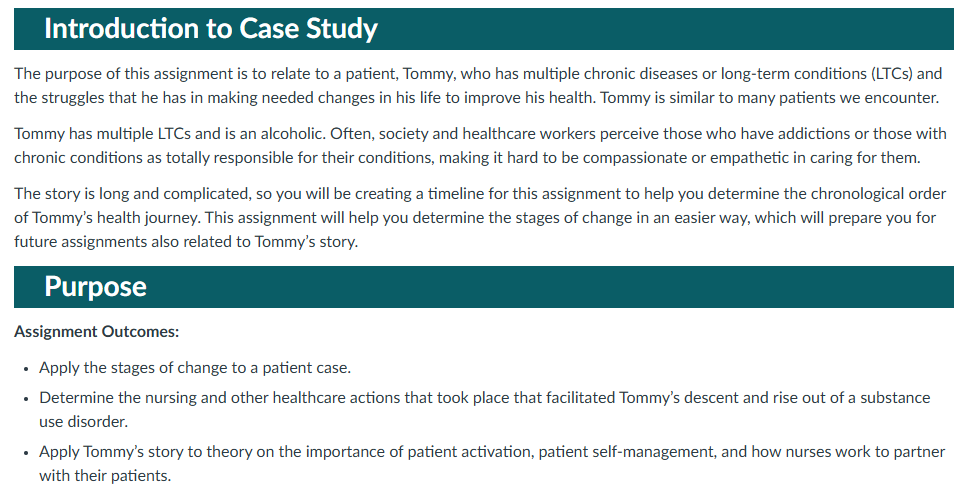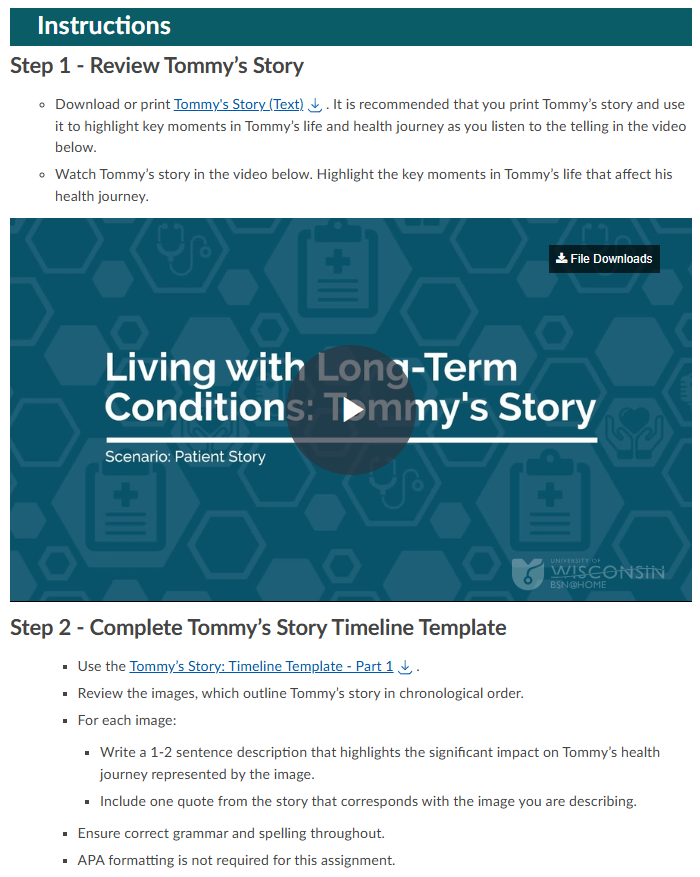Applying Nursing Concepts Through Storytelling
Overview
Students review a detailed patient case study to explore real-world nursing practices and care for patients with similar conditions.
Why Use This?
This activity helps students connect theory to practice through a realistic, multifaceted patient case. Storytelling makes the case authentic and immersive, drawing students into the narrative and giving them a way to identify real healthcare actions that helped the patient improve their health.
In addition to fostering empathy and ethical decision-making, the activity develops critical thinking, problem-solving, and communication skills, including active listening. Using narratives also links facts and ideas to characters, settings, and consequences, strengthening recall and deepening understanding of conceptual knowledge.
⭐What Students Say
Student feedback and success have greatly improved with the integration of the unfolding case study. Students are more engaged and connected to the learning materials and are meeting the objectives without difficulty. One student who completed this activity commented, “This is the patient experience that they should teach from the get-go in nursing school. It gives the perfect perspective of chronic illnesses. I will try my hardest to integrate Tommy’s story into my daily patient interactions. Patience is key. And I have already had several conversations with my peers when it comes to collaborative nursing. I hope we can make the changes necessary to collaborate better amongst patient’s multiple providers they may have and hold our patients accountable, more often.”
How Does It Work?
Students are introduced to a patient with multiple chronic conditions who struggles to make changes to improve his health, reflecting challenges many real-life patients face. As they read and watch the patient’s story, students create a timeline of his key life events, incorporating images and quotes into a provided template.
In a follow-up assignment, students use this timeline to complete advanced tasks, such as identifying the patient’s stages of change, determining where nursing and healthcare interventions supported health improvements, and applying theoretical knowledge on motivating patients and supporting their self-management.

Introduction to Case Study
The purpose of this assignment is to relate to a patient, Tommy, who has multiple chronic diseases or long-term conditions (LTCs) and the struggles that he has in making needed changes in his life to improve his health. Tommy is similar to many patients we encounter.
Tommy has multiple LTCs and is an alcoholic. Often, society and healthcare workers perceive those who have addictions or those with chronic conditions as totally responsible for their conditions, making it hard to be compassionate or empathetic in caring for them.
The story is long and complicated, so you will be creating a timeline for this assignment to help you determine the chronological order of Tommy’s health journey. This assignment will help you determine the stages of change in an easier way, which will prepare you for future assignments also related to Tommy’s story.
Purpose
Assignment Outcomes:
Apply the stages of change to a patient case.
Determine the nursing and other healthcare actions that took place that facilitated Tommy’s descent and rise out of a substance use disorder.
Apply Tommy’s story to theory on the importance of patient activation, patient self-management, and how nurses work to partner with their patients.

Step 1 – Review Tommy’s Story
Download or print Tommy’s Story (Text). It is recommended that you print Tommy’s story and use it to highlight key moments in Tommy’s life and health journey as you listen to the telling in the video below.
Watch Tommy’s story in the video below. Highlight the key moments in Tommy’s life that affect his health journey.
Video image: “Living with Long-Term Conditions: Tommy’s Story. Scenario: Patient Story.” Background has hexagon patterns with medical icons. University of Wisconsin BSN@Home logo appears in corner.
Step 2 – Complete Tommy’s Story Timeline Template
Use the Tommy’s Story: Timeline Template – Part 1.
Review the images, which outline Tommy’s story in chronological order.
For each image:
Write a 1–2 sentence description that highlights the significant impact on Tommy’s health journey represented by the image.
Include one quote from the story that corresponds with the image you are describing.
Ensure correct grammar and spelling throughout.
APA formatting is not required for this assignment.
Keep In Mind
- Developing a detailed, high-quality story takes time, especially with media elements. Start early to allow for revisions to both.
- Writing a complex narrative can be challenging, but the risk is often worth the reward; use real-life cases for inspiration and seek feedback from colleagues or other trusted readers.
- Be open to change. If the story doesn’t fully engage students, adjust it in the next revision of your course. When it succeeds, the payoff is deeper, lasting learning.